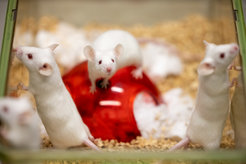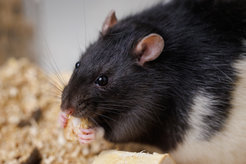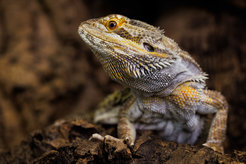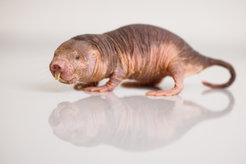Animal Husbandry
The primary function of our animal facility is to house, care for and breed all of our animals. In addition to the typical laboratory species mouse and rat, we also breed and keep the non-traditional species bearded dragon, cephalopods and naked mole rat. Almost all of the animals used in our experiments were born or hatched in our animal facility. The breeding and selection of animals is done in close collaboration between the scientists and the animal house team.
Our Mice (Rodents)

Our mice are housed in plastic cages with free access to food and water. Each cage is equipped with wooden bedding and small houses and tunnels for retreat. Sufficient nesting material (cotton, paper, carton) contribute to thermoregulation and provides hiding places and enrichment to the animals. Whenever possible, animals are group-housed to meet their social needs. They are maintained under constant temperature, humidity, and light conditions. For more information on the mouse as a model organism, please click here.
Our Rats (Rodents)

Our rats are housed in high plastic cages with a raised platform providing a second level. This allows the animals to engage in species-specific standing and climbing behaviors. The rats also have free access to food and water, and each cage is equipped with wooden bedding. In addition, tubes or houses provide hiding places, paper towels keep the animals occupied and serve as nesting material, and wooden balls or sticks provide additional play and gnawing opportunities. Whenever possible, animals are housed in groups and under constant temperature, humidity and light conditions.
Our Bearded Dragons (Reptiles)

Our Bearded Dragons live in custom designed terraria. Optimal temperature is crucial for the well-being of a reptile, so each terrarium is equipped with a UV lamp, a heat lamp and an LED lamp, all of which are electronically controlled . Cardboard houses, rocks and cork bark are used for hiding and climbing. Bearded dragons are fed a variety of insects, lettuce and dried herbs, with each animal receiving an individualized diet. Hibernation takes place in wine coolers at optimal temperature and humidity. After successful mating, the females lay eggs in a dampened sandbox and the eggs are incubated in special incubators.
Our Cephalopods

As marine animals, our cephalopods require specially designed aquaria and systems. Artificial seawater and sophisticated filtration ensure optimal water quality, tailored to the species being kept far away from the sea. Key water parameters are constantly monitored so that immediate action can be taken if necessary. We currently house the common cuttlefish (Sepia officinalis) in cooler systems and the tropical bobtail squid (Euprymna berryi) in a separate warmer system. Masters of camouflage, the daily observation of these animals requires patience and practice. To camouflage they change color and skin texture and often bury themselves in the sand substrate provided in all tanks. Hiding places such as artificial plants and shelters are provided in the tanks. While young animals are fed exclusively live food, older Sepia officinalis receive additional frozen food as part of their diet.
Our Naked Mole-Rats (Rodents)

Our naked mole-rats live in colonies of varying sizes and are the only known "eusocial" mammalian species. They are the newest species in our animal facility and were imported to Frankfurt in 2022. Ventilated animal husbandry cabinets were converted for the naked mole rats and equipped with heating plates, temperature and humidity sensors. A humidifier provides the 60-100% humidity required by the naked mole-rats, which is continuously monitored along with the temperature. The custom-built circular cages are connected by a system of tunnels that can extend over several levels. The animals are fed fresh fruit and vegetables daily.
Quality Standards and Control
The high quality standards in animal husbandry and animal research are constantly monitored by our animal welfare officer. The animal welfare officer is supported by the institute’s internal animal welfare committee.
Proper housing of non-traditional laboratory animal species presents unique challenges and requires ongoing efforts to improve animal welfare. A great deal of experience, dedication and effort is required from the early planning stages through to use in research. The establishment of our unique bearded dragon colony alone has been a long-term process, successfully implemented by many dedicated staff and through continuous improvement. With this support, we are able to effectively implement new routines and optimizations at any time.




